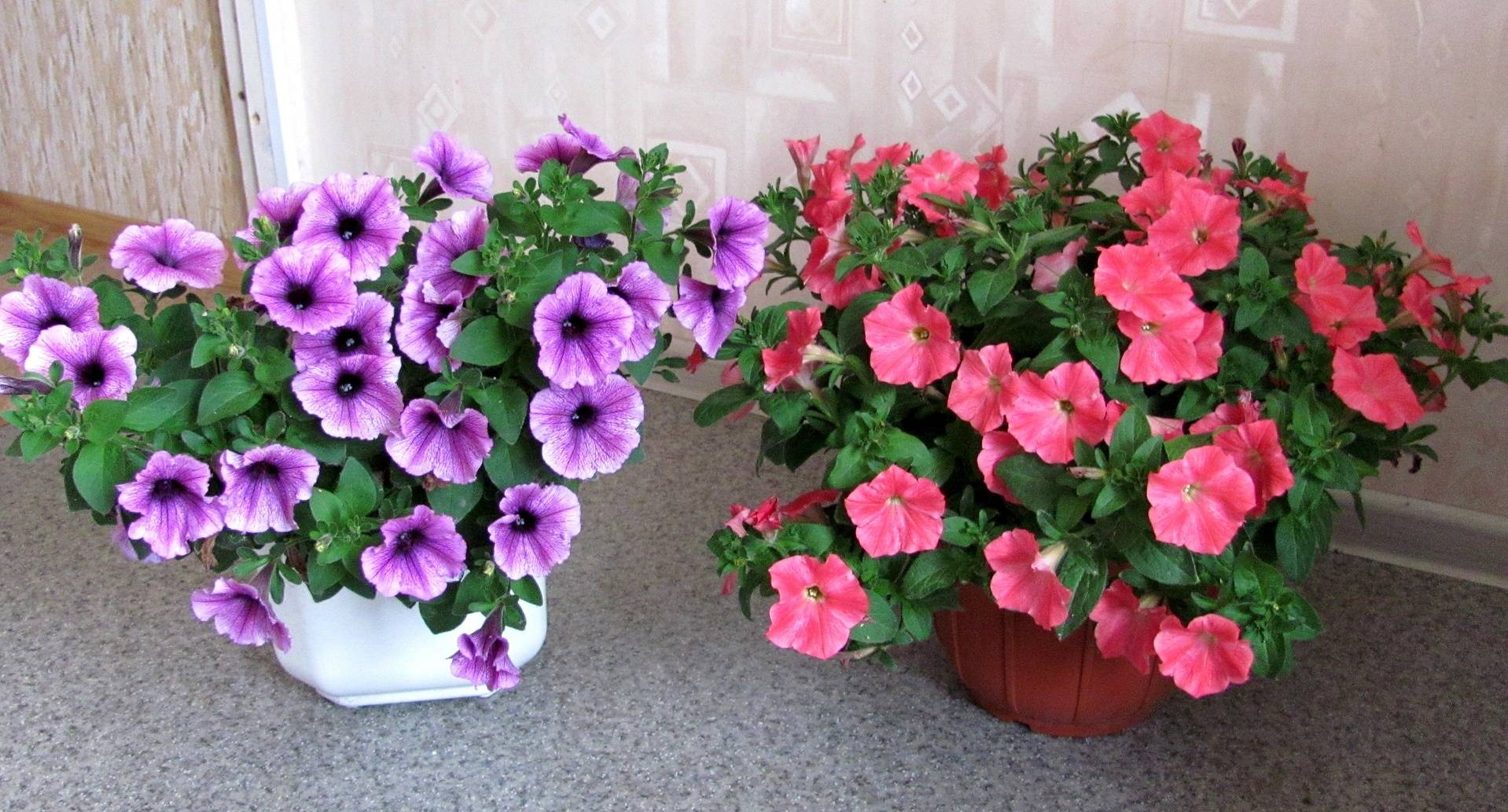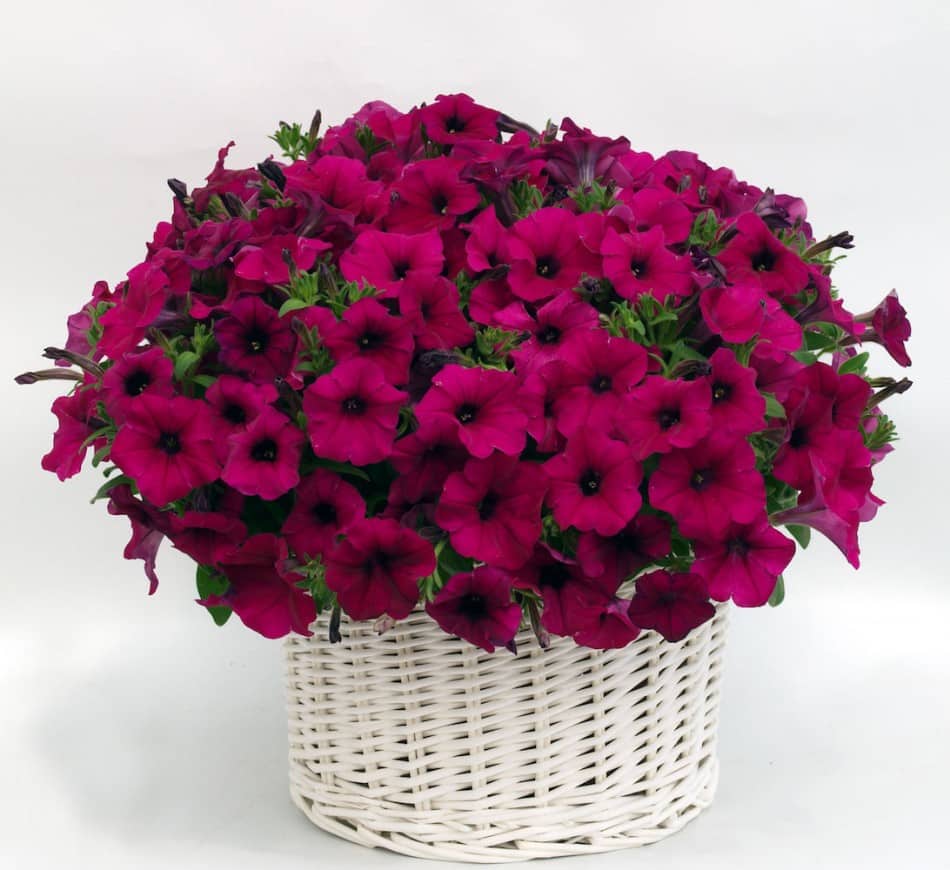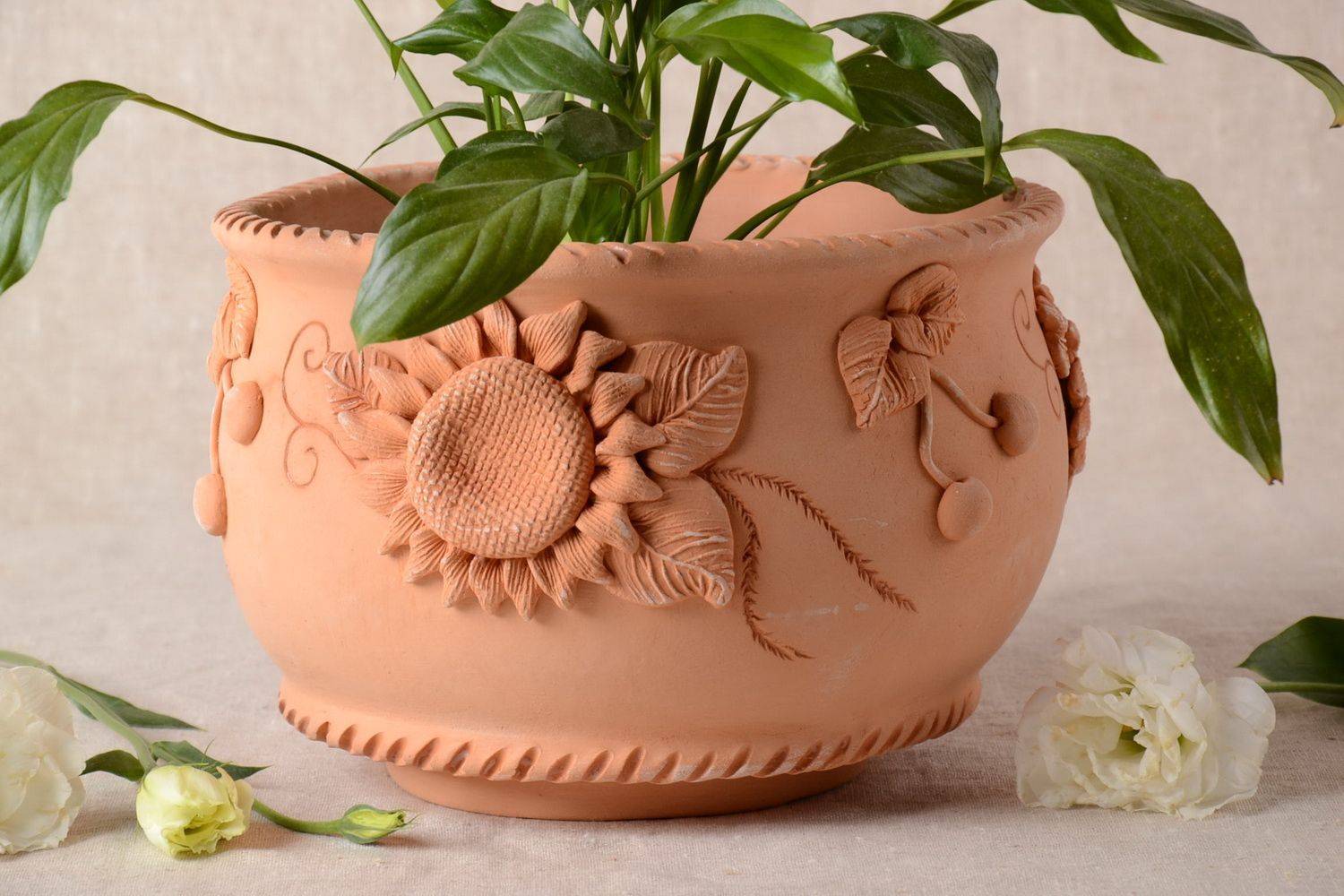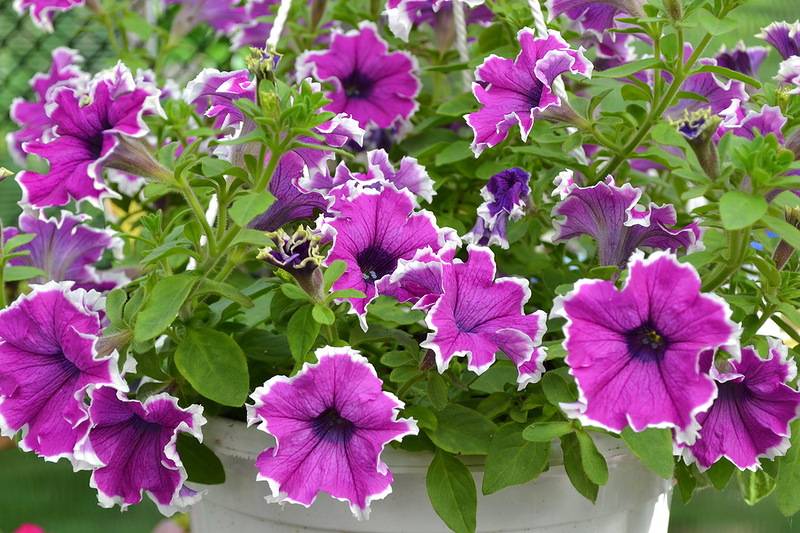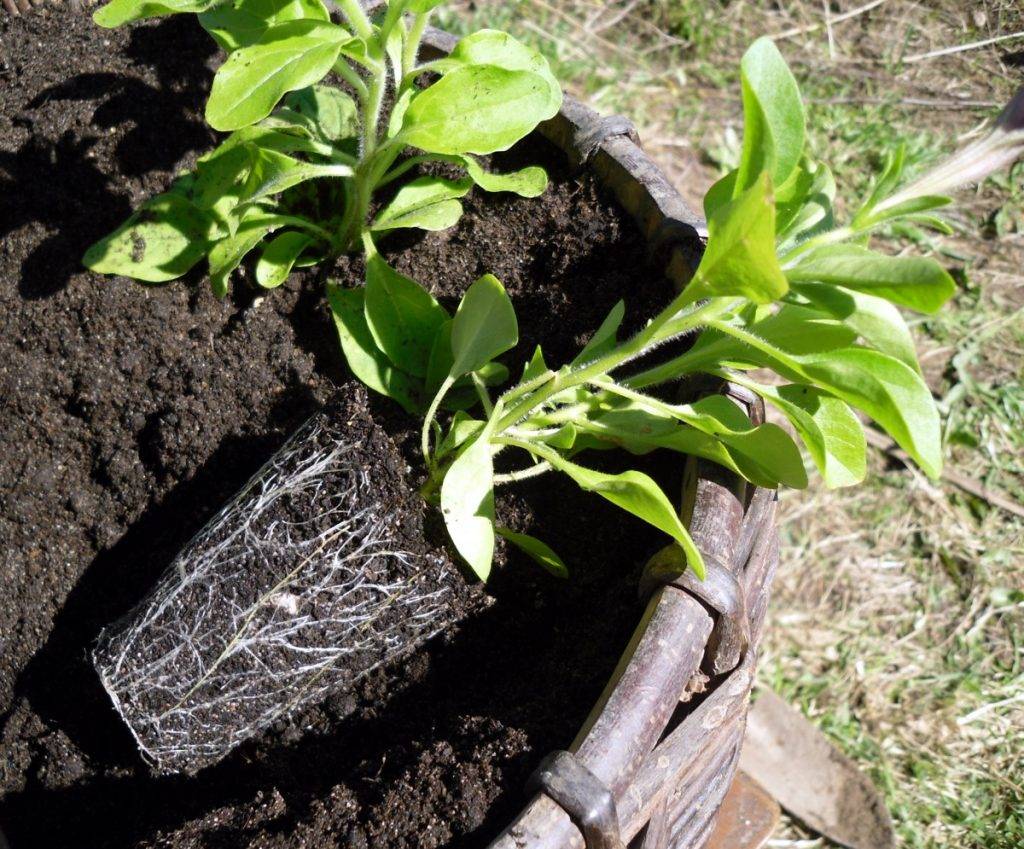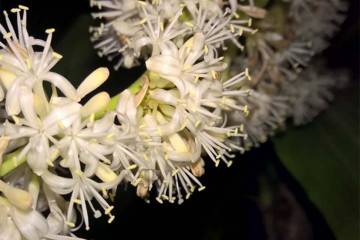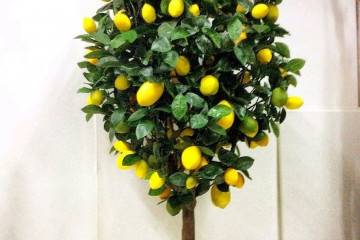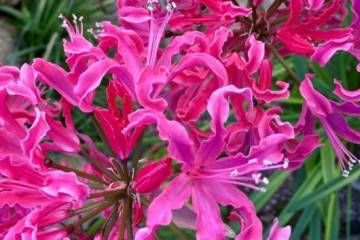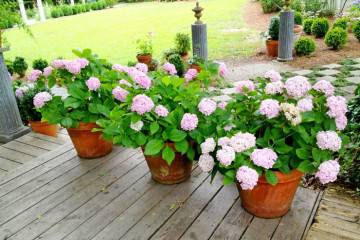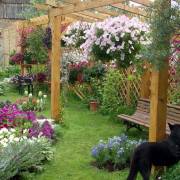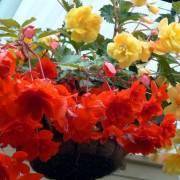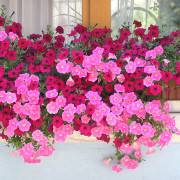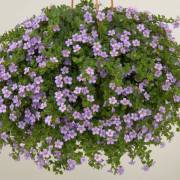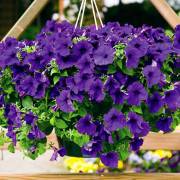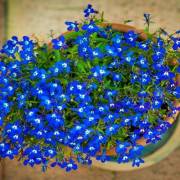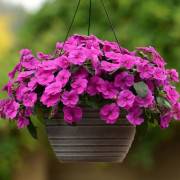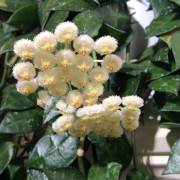Petunias on the balcony - proper care of the plant
Content:
- Features of the root system of petunias
- Home cultivars
- What are the types of pots
- How to make a pot with your own hands at home
- Landing rules
- Transplanting seedlings into pots
- What conditions must be observed when caring for decorative petunias
- Features of care during the rest period
- Is it possible to plant indoor petunia on the street
Petunia is one of the most common flower crops used for landscaping home gardens. The flower is very unpretentious in cultivation, and it is impossible to take your eyes off the abundant flowering.
Features of the root system of petunias
Before you start growing a plant in an apartment or on a balcony, you need to study the size and structure of the root system. Fully formed bushes have a fibrous rhizome. There is no main root, but there are many thin white roots that grow throughout the pot. Despite the developed rhizome, the plant is quite suitable for planting in pots or flowerpots.
In the apartment and on the balcony, the flower feels great. Petunia is one of those plants that is often used to decorate terraces, loggias and balconies.
Home cultivars
For planting in pots and flowerpots of petunias on the balcony, ampelous and cascade varieties are most often used.
In ampel varieties, the stems grow up to 1.2 m. Shoots grow downward. They break easily in strong winds. Most often, these varieties are used for planting in pots.
Cascading hybrids are distinguished by denser stems, the length of which is 1.5 m. The shoots first grow upward, and then descend downward in a smooth cascade.
The best varieties of petunias for growing at home:
- Black velvet. Petals of an unusual black and pine color;
- Masha. Inflorescences of a rich pink color;
- Catherine. Flowers of delicate salmon color;
- The Snow Queen is distinguished by snow-white petals;
- Opera supreme belongs to the small-flowered varieties;
- Avalanche is a great option for landing on a balcony or loggia;
- Corduroy is characterized by small velvety flowers;
- Double cascade. The flowers are large, exude a rich aroma;
- La Gioconda. Inflorescences of violet-lavender color;
- Typhoon is distinguished by long and abundant flowering.
What are the types of pots
Before planting petunia, you need to decide on the type of pot.
What are the types of pots:
- a planter is a container for flowers without a hole at the bottom. A pot with a plant is placed in it. The planter can also be suspended;
- flowerpots are large containers that are usually placed on the floor in the house or on the ground outside;
- pots are the most common type of pot for planting indoor flowers. They come in different sizes. There are holes at the bottom of the pot;
- if you want something like that, you can purchase containers with an unusual design. You can also make the pots yourself.
Which pot is best for a particular flower
When choosing a pot for petunia, you need to focus on the varietal affiliation of the flower. For terry hybrids, containers with a volume of about 3 liters are suitable. For common varieties, these are 5 liter pots.
The number of bushes planted in one pot depends on its size. If the diameter of the pots does not exceed 30 cm, then you can plant 3 bushes in it. If it is necessary to plant more plants in one container, then, accordingly, the diameter of the pots should be larger.
Another important question is how many petunias to plant in one pot. Petunia is one of those plants that need as much space as possible. If there is not enough space in the pot, the root system will not be able to develop normally, and this in turn will lead to a decrease in the number of buds and the drying of the flower.
The choice of container for planting does not depend on the type of irrigation. It is also not so important where the pot will stand - on the balcony or on the floor. The only caveat is if the flower needs to be transplanted into a hanging planter. In this case, it is better to take small pots that will not fall from the hanging mount and will not get in the way.
How to make a pot with your own hands at home
A petunia pot can be made with your own hands, for example, from tree branches.
What is required for this:
- branches of different lengths and diameters;
- plastic pot;
- liquid Nails.
How to make a designer pot:
- Prepare branches. They can be cut just above the edge of the pot, or they can be left in different lengths.
- Fasten the branches with liquid nails.
- Press them harder.
- You can immediately plant flowers in a pot.
Another option for a designer pot is made of polymer clay.
What you need:
- polymer clay;
- knife;
- the spoon;
- stove.
How to do:
- First you need to soften the clay.
- As soon as the material becomes soft, you need to roll a ball out of it.
- For 10 minutes. it is put in the freezer.
- Then, with the help of a spoon, you need to make a hole, where you can then pour the earth.
- After that, the workpiece must be sent to the freezer again.
- The last step is shaping the pot. This can be done with a knife.
Landing rules
Any boxes for planting seeds can be used. It is also important to choose the right land for the petunia.
What kind of land do petunias love:
- the soil must be moisture-consuming;
- the soil for petunia must be loose;
- the acidity level should be in the range of 5.5-5.7 pH. You need to measure the acidity in advance, before planting seeds. To measure it, gardening stores sell special devices;
- the soil should be rich in nutrients.
You can buy the soil from the store or make it yourself.
Substrate composition:
- coconut fiber;
- universal soil;
- agroperlite;
- wood ash.
If land from a summer cottage is used, then before planting it must be etched, for example, you can pour boiling water and cover with cling film. When the ground cools down, repeat the procedure. You can also water the soil with potassium permanganate solution.
How to grow ampelous petunia:
- Flower reproduction occurs mainly by seed. Fill drainage to the bottom of the box, then soil.
- Sow seeds and lightly sprinkle with soil.
- Water the soil.
- Cover the box with cling film and place on the south window.
- When sprouts appear, remove the film.
- A pick is carried out after a pair of full-fledged leaves appear on each bush.
Transplanting seedlings into pots
When transplanting a flower into a pot, you need to determine how many bushes to plant in one container.If you plan to plant more than 1, then it is better to leave the distance between them as much as possible.
After a while, when the bushes grow up, they will need to be shaped. At the longest stems, pinch the top. This will make the bushes more lush. Although you can do without formation. Long, dangling stems will look very nice too.
What conditions must be observed when caring for decorative petunias
For abundant flowering, the plant needs constant and proper care. It is also important to provide optimal conditions for growth. Below is a detailed description of how to care for a petunia on the balcony.
Temperature
In order for as many shoots as possible to appear, it is necessary that the room be very warm. The optimum temperature is from 25 ° C to 30 ° C. To do this, you can cover the containers with cling film until sprouts appear.
Watering and humidity
The culture does not tolerate dry air. In order for the flower to grow healthy, it must be regularly sprayed with warm water from a spray bottle. The humidity level in the room should be between 60-70%.
Petunia is watered as the soil dries up. In the summer you have to water every day. It is recommended to irrigate the soil in the evening after sunset so that burns do not appear on the foliage. It is recommended to use warm water that has been settled for 2 days. Irrigation with ice water leads to fungal diseases.
Lighting
The culture belongs to the light-loving, therefore it prefers diffused sunlight. It is best if the containers are located on the western or eastern windows. Most of the day, the flower should be in the sun, so northern windows will not work for it. Also, petunia tolerates the south side with hot sun rays well. Grows poorly in the shade.
Top dressing
The answer to the question of why petunia does not grow well in pots is simple - the flower does not have enough fertilizer. When growing petunias in pots, top dressing should be regular.
The soil for petunias in small containers quickly becomes poor. Plants begin to turn yellow and dry out. Balcony petunia is especially in need of fertilizers, if they are not applied, the flower will disappear. You can use both organic and mineral supplements.
Features:
- the land for petunias must be regularly fertilized with complex mineral fertilizers for flowering plants;
- fertilizers are applied only to wet soil;
- it is best to use liquid or instant formulations.
Features of care during the rest period
Few people know, but petunia is a perennial plant. In Russian latitudes, this plant is mainly grown outdoors, and the thermophilic petunia, which is native to hot Brazil, is not adapted to harsh winters. Therefore, the flower dies during the winter. But if you grow a plant at home, it will grow for more than one year. Thus, you can extend the life of the flower.
Winter care features:
- at this time of the year, the plant needs additional lighting. This problem can be solved with artificial lighting. Daylight hours should be at least 12 hours, therefore, as soon as it gets dark, you need to turn on the lamps and leave them until morning;
- Indoor air is very dry in winter with the beginning of the heating season. This negatively affects the health of the petunia.Spider mites or powdery mildew may appear. To solve this problem, you can put cups of wet expanded clay next to the pots and spray the foliage with water as often as possible.
Is it possible to plant indoor petunia on the street
There are no restrictions on planting a room petunia on the street in the country. The plant can be transplanted into a flower bed at any time. The main thing is not to damage the root system during transplantation. If during the transplantation of seedlings they quickly take root in a new place, then with an adult plant it will be necessary to act more carefully. It is best to plant a flower with a clod of earth in which it grew at home.
Growing petunias at home is a pleasure. The flower will delight every day with abundant and beautiful flowering and fill all rooms in the house with a pleasant aroma.
